
Folldal is a municipality in Innlandet county, Norway. It is located in the traditional district of Østerdalen. The administrative centre of the municipality is the village of Folldal. The municipality was established in 1914 when it was separated from Alvdal Municipality.
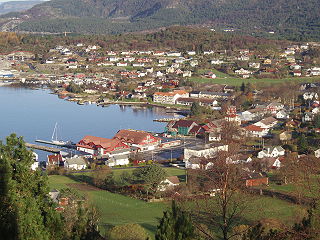
Fitjar is a municipality in Vestland county, Norway. The municipality is located in the traditional district of Sunnhordland. Fitjar municipality includes the northern part of the island of Stord and the hundreds of surrounding islands, mostly to the northwest of the main island. The administrative centre of the municipality is the village of Fitjar.

The Paus family is a Norwegian family that first appeared as members of the elite of 16th-century Oslo and that for centuries belonged to Norway's "aristocracy of officials" as priests of the state church, judges and other higher government officials, especially in Upper Telemark. The family is particularly known for its close association with Henrik Ibsen.

Elseus Sophus Bugge was a Norwegian philologist and linguist. His scholarly work was directed to the study of runic inscriptions and Norse philology. Bugge is best known for his theories and his work on the runic alphabet and the Poetic Edda and Prose Edda.
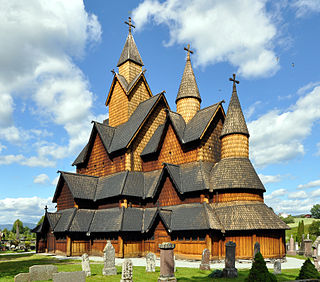
Religion in Norway is dominated by Lutheran Christianity, with 68.7% of the population belonging to the Evangelical Lutheran Church of Norway in 2019. The Catholic Church is the next largest Christian church at 3.1%. The unaffiliated make up 18.3% of the population. Islam is followed by 3.4% of the population.
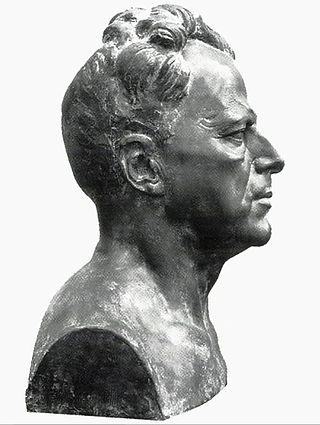
Nikolai Nissen Paus was a Norwegian surgeon, hospital director and humanitarian. He served as President of the Norwegian Red Cross 1945–1947, and as Vice President 1930–1945 and acting President 1939–1940. He was also President of the Norwegian Florence Nightingale Committee and chaired several governmental committees.
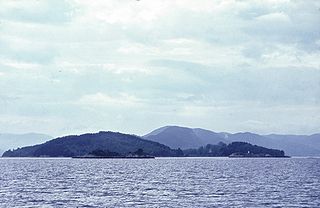
Veøy is a former municipality in Møre og Romsdal county, Norway. The 249-square-kilometre (96 sq mi) municipality existed from 1838 until its dissolution in 1964. It initially consisted of all of the present-day Vestnes Municipality, as well as the southern part of Molde Municipality and the northern part of Rauma Municipality. Vestnes Municipality was only part of Veøy for a few months in 1838 before it was made into a separate municipality. In 1964, the municipality was split between Molde and Rauma municipalities. Veøy Municipality was named after the island of Veøya, the administrative centre, where the main church for the municipality was located. There are no inhabitants on the island of Veøya.
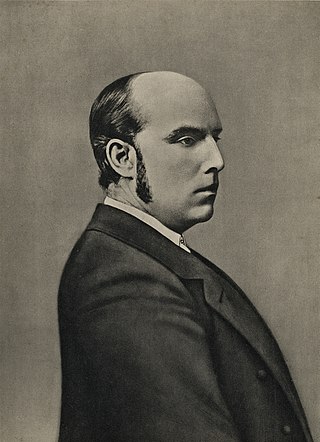
Lars Olsen Skrefsrud was a Norwegian Lutheran missionary and language researcher in India.

Thomas Ball Barratt, also known as T. B. Barratt, was a British-born Norwegian pastor and one of the founding figures of the Pentecostal movement in Europe, bringing the movement, or baptism in the Holy Spirit, as it became known, to Norway and Europe in 1906. He was originally a Methodist pastor but later left the church and went on to establish the Pentecostal movement in Norway.
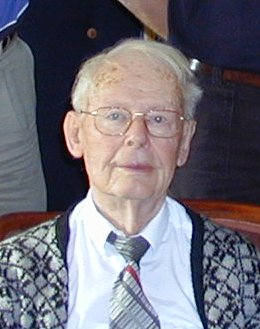
Carl Fredrik Wisløff was a Norwegian lutheran theologian and preacher, who spent much of his professional career at the MF Norwegian School of Theology. He is considered among the most important lay preachers in 20th-century Norway.

Tromøya or Tromøy is the largest island in Southern Norway. The 28.6-square-kilometre (11.0 sq mi) island is entirely located in the municipality of Arendal in Agder county, Norway. The island has about 5,300 residents which gives it a population density of about 185 inhabitants per square kilometre (480/sq mi). The island is located directly across the harbor from the town of Arendal. The highest point on the island is the 95-metre (312 ft) tall Vardåsen. The island is separated from the mainland to the north by the Tromøysundet strait and it is separated from the island of Hisøya to the southwest by the Galtesundet strait.
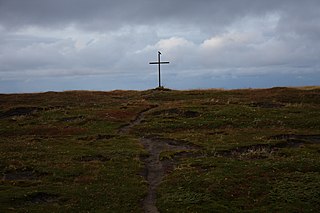
Christianity is the largest religion in Norway. Norway has historically been called a Christian country. A majority of the population are members of the Church of Norway with 68.7% of the population officially belonging to the Evangelical Lutheran Church of Norway in 2019. At numerous times in history, Norway sent more missionaries per capita than any other country. This changed considerably from the 1960s. In 2004, only 12% of the population attended church services each month. Citizens born in Norway to one or two Norwegian parents are automatically added to the list of Protestant Christians in Norway, and are required to "sign out" of the church. There are two categories kept in the church's books, medlemmer ('members') and tilhørige. Members technically have to be baptised, whereas tilhørige are to be taken out of the books if not baptised by the age of 18. Norwegian citizens' tax funds are given to the Protestant Church until one registers as a member of another religious group, or as a member of the Humanist association.
Otto Torvik was a Norwegian missionary in Xinjiang and in India. He founded the Norwegian Missionary Muhammad Mission in 1940. Today, the name is changed to Christian Muslim Mission.
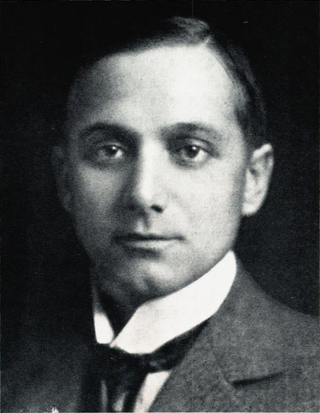
George Wegner Paus, often known as George Paus, was a Norwegian lawyer, mountaineer, skiing pioneer and business executive. He was Director at the Norwegian Employers' Confederation. As such, he played an important role in labour issues in Norway and in the development of Norwegian labour law from the early 20th century. He participated in the establishment of the International Labour Organization in 1919 as a representative of the Norwegian government and was a member of several governmental committees.
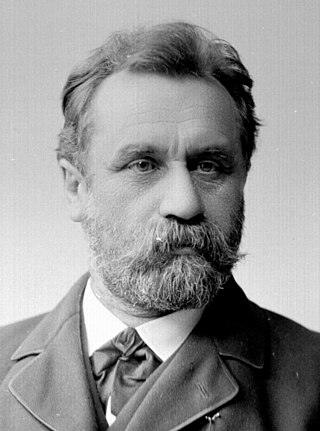
Bernhard Cathrinus Pauss was a Norwegian theologian, educator, author and humanitarian and missionary leader, who was a major figure in girls' education in Norway in his lifetime.
The Norwegian Santal Mission was a Norwegian humanitarian and missionary organisation that was mainly active in India, particularly among the Santhal people. It was affiliated with the (Lutheran) Norwegian State Church and existed from 1867 until it merged with other organisations to form Normisjon in 2001. The Norwegian Santal Mission has operated schools and hospitals in India and Bhutan.
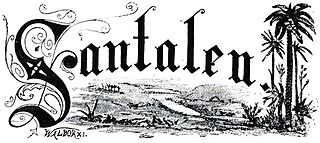
Santalen was a magazine published by the Norwegian Santal Mission from 1883 to 2001. The journal was founded and edited by Bernhard Pauss, who was also the chairman of the Norwegian Santal Mission's central committee from 1887 to 1907. Following his death his widow Henriette Pauss became editor. The journal had a circulation of around 5,000 in the 1880s and 14,000 in 1977. In 2001 the Norwegian Santal Mission merged to become part of Normisjon, and the publication was succeeded by Agenda 3:16.
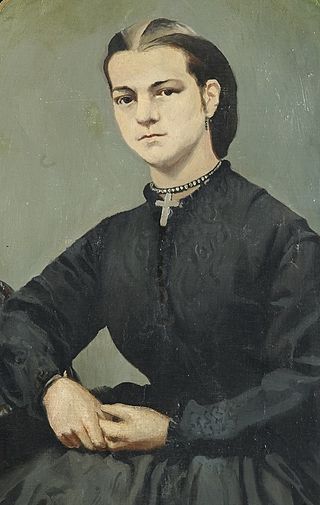
Anna Henriette "Jette" Pauss, née Anna Henriette Wegner, was a Norwegian teacher, editor and humanitarian and missionary leader.
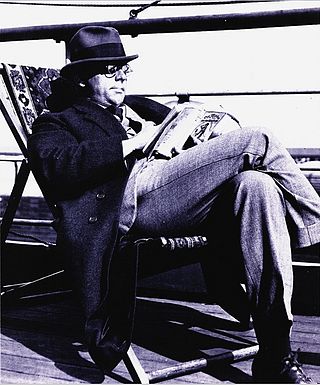
Augustin Thoresen Paus was a Norwegian engineer and industrial leader in the hydropower industry. From 1918 he led the construction of the hydroelectric power plant at Rånåsfoss, one of the largest in Europe. Following the construction of the plant, he was the first managing director of Akershus Energi from 1922 until his death in 1945. He was "one of the most prominent leaders in the Norwegian energy industry" until his death.
Johannes Thoft Krogh was the Registrar of the nation's first University, the Senate of Serampore College (University) who was in office from 1975 through 1978.

















